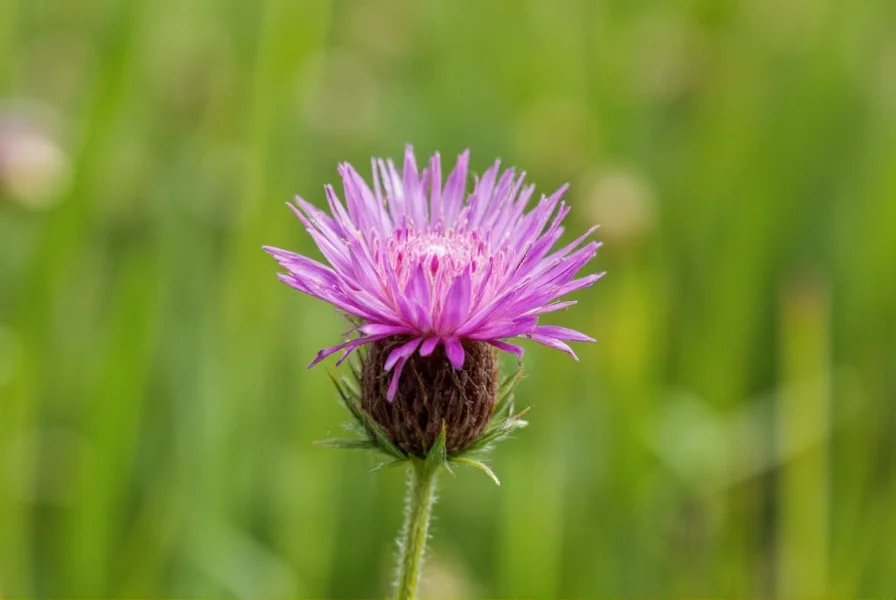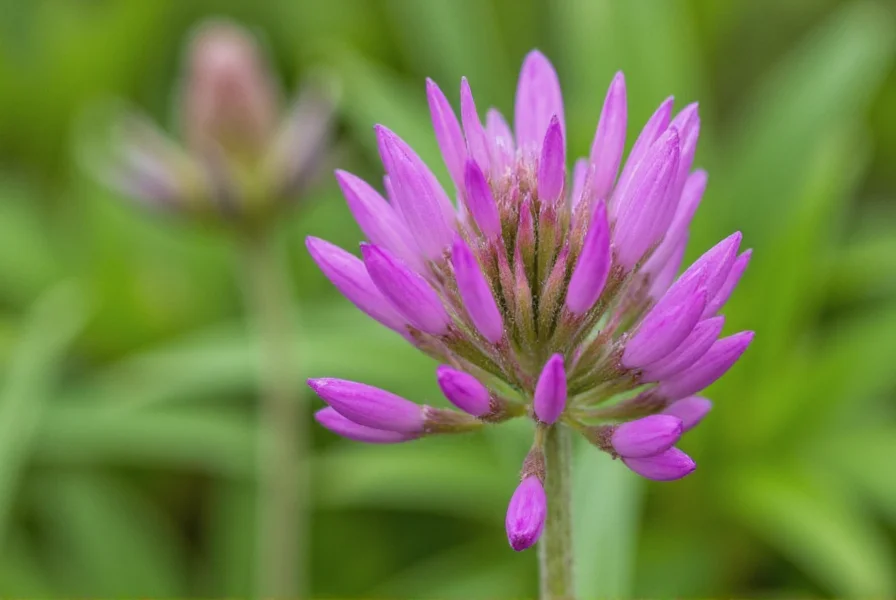Purple prairie-clover, scientifically known as Dalea purpurea, stands as one of North America's most ecologically valuable native wildflowers. This hardy perennial belongs to the Fabaceae family and demonstrates remarkable adaptation to the challenging conditions of native grasslands. Unlike true clovers in the Trifolium genus, purple prairie-clover belongs to the Dalea genus, which comprises approximately 100 species of flowering plants commonly called prairie-clovers.
Botanical Classification and Nomenclature
The precise scientific classification of purple prairie-clover reveals its evolutionary relationships and ecological niche. Understanding this nomenclature helps avoid confusion with similar-looking plants that aren't closely related.
| Taxonomic Level | Classification | Significance |
|---|---|---|
| Kingdom | Plantae | Confirms it's a multicellular photosynthetic organism |
| Family | Fabaceae | Legume family with nitrogen-fixing capabilities |
| Genus | Dalea | Distinguishes from true clovers (Trifolium) |
| Species | purpurea | Refers to the purple flower coloration |
Physical Characteristics and Identification
Accurate identification of purple prairie-clover requires attention to several distinctive features. The plant typically reaches heights between 12-24 inches with multiple slender stems emerging from a woody base. Its most recognizable feature is the dense, cylindrical flower spike (3-5 cm long) composed of numerous small, tubular flowers that range from deep purple to pinkish-purple.
The compound leaves exhibit a feather-like arrangement with 15-25 narrow leaflets per leaf, creating a delicate, fern-like appearance. Unlike true clovers, purple prairie-clover lacks the characteristic three-leaf configuration. The plant produces small, inconspicuous seed pods containing one or two seeds each, which mature in late summer.
For reliable purple prairie-clover identification, examine these key characteristics:
- Flower structure: Dense cylindrical spikes with individual pea-like flowers
- Leaf arrangement: Pinnately compound with numerous narrow leaflets
- Stem texture: Slender, often reddish-tinged, with fine hairs
- Blooming period: June through August in most regions
- Root system: Deep taproot with nitrogen-fixing root nodules
Habitat and Geographic Distribution
Purple prairie-clover demonstrates impressive adaptability across various North American ecosystems. Its natural range extends from southern Canada through the Great Plains to northern Mexico, with isolated populations in eastern and western regions. This native prairie wildflower prefers well-drained soils in full sun conditions, commonly found in:
- Tallgrass and mixed-grass prairies
- Open oak savannas
- Roadside prairies and conservation areas
- Dry to mesic prairie remnants
- Sandy or gravelly soils with good drainage
The plant's drought tolerance makes it particularly valuable in restoration projects across the central United States. Purple prairie-clover growing conditions typically include areas with minimal competition from aggressive grasses, as it struggles in heavily shaded environments. Its deep taproot system allows it to access water during dry periods, contributing to its resilience in native ecosystems.
Ecological Importance and Wildlife Value
As a native prairie wildflower, purple prairie-clover provides critical ecosystem services that support biodiversity. Its ecological importance extends beyond mere aesthetics, playing several vital roles in healthy grassland ecosystems.
The plant's nitrogen-fixing capabilities significantly improve soil fertility, benefiting surrounding vegetation. Through symbiotic relationships with rhizobia bacteria in root nodules, purple prairie-clover converts atmospheric nitrogen into forms usable by other plants. This natural fertilization process reduces the need for artificial soil amendments in restoration projects.
For pollinators, purple prairie-clover serves as an essential nectar and pollen source. Research shows it attracts:
- Native bees, particularly long-tongued species
- Honeybees during mid-summer when other blooms may be scarce
- Butterflies seeking nectar sources
- Specialist pollinators that rely exclusively on legumes
Birds and small mammals also benefit from purple prairie-clover, using its seeds as a food source after they mature in late summer. The plant's structure provides cover for ground-nesting insects and contributes to overall habitat complexity.
Distinguishing Purple Prairie-Clover from Similar Species
Many gardeners and naturalists confuse purple prairie-clover with other plants. Understanding these distinctions ensures proper identification and appropriate use in restoration projects.
Prairie-clover vs. True Clovers: Despite the name, purple prairie-clover isn't closely related to true clovers (Trifolium species). True clovers typically have three leaflets per leaf and spherical flower heads, while prairie-clovers feature numerous leaflets and cylindrical flower spikes.
Purple vs. White Prairie-Clover: The white prairie-clover (Dalea candida) shares similar growth habits but features white to pale pink flowers. White prairie-clover generally prefers moister sites and has slightly broader leaflets.
Differentiating from Other Look-alikes: Some plants like blazing stars (Liatris species) may resemble purple prairie-clover at first glance but lack the feathery leaves and belong to a completely different plant family.

Conservation Status and Preservation Efforts
While purple prairie-clover remains relatively common across its native range, habitat loss has impacted local populations. The conversion of native prairies to agricultural land has reduced available habitat, making conservation efforts increasingly important.
In several states, purple prairie-clover appears on watch lists due to declining populations in specific regions. Conservation organizations actively promote its inclusion in prairie restoration projects because of its ecological benefits and role in supporting native pollinator populations.
When considering purple prairie-clover for landscaping or restoration, always source plants from reputable native plant nurseries that propagate local ecotypes. This practice helps maintain genetic diversity and ensures the plants are adapted to regional conditions.
Growing Purple Prairie-Clover in Native Landscapes
Gardeners interested in supporting native ecosystems can successfully incorporate purple prairie-clover into appropriate settings. For best results when growing purple prairie-clover:
- Choose a sunny location with well-drained soil
- Plant seeds in fall for natural stratification or cold-treat seeds before spring planting
- Avoid fertilizing, as this encourages competitive grasses
- Allow plants to self-seed for natural propagation
- Pair with complementary native species like little bluestem or coneflowers
Established plants require minimal maintenance and demonstrate excellent drought tolerance once established. The plant's relatively compact size makes it suitable for smaller native plant gardens, though it performs best when grouped with other prairie species that provide structural support.
Conclusion
Purple prairie-clover represents an essential component of healthy North American grassland ecosystems. Its distinctive purple flower spikes, nitrogen-fixing capabilities, and value to pollinators make it a standout among native prairie wildflowers. As restoration efforts continue across the continent, this resilient plant serves as both an indicator of ecosystem health and a valuable contributor to biodiversity. Understanding how to identify purple prairie-clover and recognizing its ecological importance helps conservationists, gardeners, and nature enthusiasts appreciate this remarkable native species.











 浙公网安备
33010002000092号
浙公网安备
33010002000092号 浙B2-20120091-4
浙B2-20120091-4